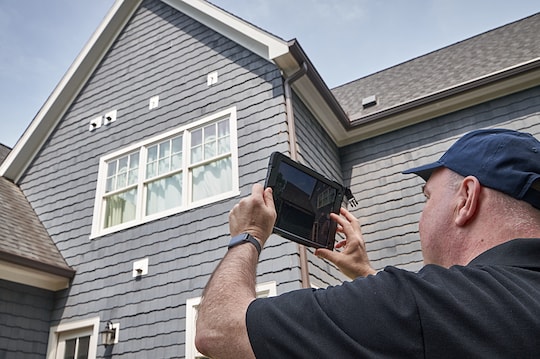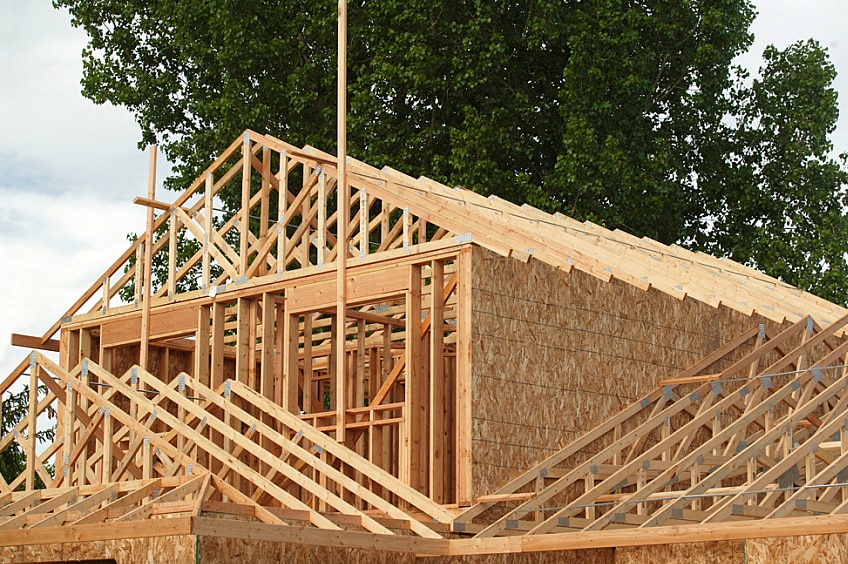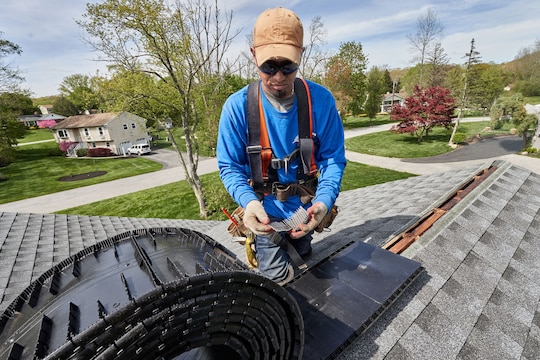
Roof trusses provide the structural support for a home's roof, supporting the roof deck material, insulation, and any loads that are placed on the roof. As a result, they have to be strong enough to withstand wind, rain, snow, and any other types of weather that your region might be prone to.
Let's take a look at why it's important to know what kind of trusses your home has, how to determine what type of trusses your home may have, and what other types of roof trusses are available.
Why You Need to Know Which Trusses You Have
If you're going to invest in a remodel or addition to your home, you'll need to know what type of trusses are already inside. You'll want the roof's shape and slope to match your existing home and give the building a consistent look.
If you plan to add attic space or a room in your attic, you'll also need to find what type of trusses were used. Roofing professionals may need to change them to attic trusses in order to add living space.
Although most of them look somewhat similar, trusses come in a wide variety. The main differences lie in the shape of the truss and the location and configuration of the webbing. Understanding the structural interior of your roof makes it simpler to replace trusses and add new material to the home without sacrificing the home's aesthetic.
How to Determine What Type of Trusses You Have
Consider three key characteristics of your home to determine what type of trusses you may have:
- Roof Shape: Roofs primarily come in three shapes: gable, hip, and gambrel. Once you know what shape your roof is, you can determine what types of trusses might have been used. For example, if you have a hip roof, you will have hip trusses. If you have gambrel-style roof, you will have gambrel trusses.
- Ceiling Type: Your interior ceiling may also indicate what type of trusses were used. Having pitched or vaulted ceilings on the top floor of your home is a sign of scissor trusses.
- Attic Space: If your attic space is finished or if you have a room in your attic, then your home should have attic trusses. If the attic is not finished, you can inspect the visible trusses to determine their style.
Most Common Trusses for Homes
Among residential roofing systems, some of the most common roof trusses include the following, which you can learn more about in the section below:
- King and Queen: These post trusses are most commonly used on additions and new homes. The queen post variety can support longer spans than the king.
- Fink Trusses: Commonly used in residential construction, fink trusses can carry larger loads compared with other varieties and are able to support new homes and additions.
- Attic Trusses: Attic trusses make framing these attic spaces easier by including the wall framing in the truss.
- Scissor Trusses: These trusses help homeowners achieve high, sloped ceilings, making them popular among modern homes with open floor plans.
- Gable Trusses: This type of truss is usually placed at each end of a home with a gable roof to close off the attic space and provide support for exterior sheeting.
10 Types of Roof Trusses
Both residential and commercial roofing systems have a wide range of possible roof trusses:
1. King Post
A king post truss is the simplest variety of roof trusses with the fewest components—just two top chords, one bottom chord, one central vertical post called a king post, and two webbing chords. They help span short distances and are best for additions, garages, or other small spaces.
2. Queen Post
A queen post truss is similar to a king post. Rather than having one centered vertical post, a straining beam connects two vertical posts that work well for new home constructions and larger home additions.
3. Fink
Fink trusses typically have a role in constructing residential roofs. The webbing forms a W shape, allowing for greater load-bearing capacity that can come in handy during new home constructions and large additions.
4. Gambrel
Gambrel trusses create a barn-shaped roof that is becoming popular with the resurgence of the farmhouse style. This uniquely tall design can add vertical space to a structure while spanning an entire house.
5. Attic
Traditional trusses don't provide enough room for an attic living space, so attic trusses provide additional space under the roof. Attic trusses include the framing for the attic room in the truss design. They look similar to queen post trusses, but the posts are farther apart.
6. Scissor
Scissor trusses have sloped bottom chords that create vaulted ceilings such as the ones in many open-plan homes.
7. Fan
Used on medium-sized buildings, fan trusses are primarily made from steel and have a relatively simple style. The top chord is divided into smaller lengths, and the webbing is a combination of queen post and fink trusses.
8. Gable
Gable trusses provide the end to a gable roof, a standard roof style for homes. It consists of two top chords, one bottom chord, and several posts set vertically for webbing.
9. Hip
Hip trusses are used to create a hip, or hipped, roof. This style of roof slopes on all four sides, forming a pyramid shape that makes them a reliable choice in areas of high wind and snow. They have to be specially engineered with the correct slope and ridge location.
10. Flat
Flat trusses are used for flat roofs, generally on commercial buildings. They are built similar to floor trusses and provide a lot of support.
Searching for the right contractor for future roofing projects? Find a GAF-certified contractor* near you.
*Contractors enrolled in GAF certification programs are not employees or agents of GAF, and GAF does not control or otherwise supervise these independent businesses. Contractors may have agreed that they will use GAF roofing products, and may receive benefits, such as loyalty rewards points and discounts on marketing tools from GAF for participating in the program.



